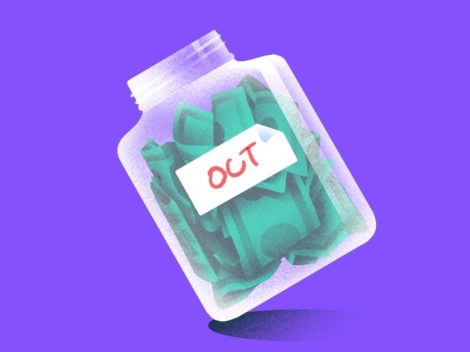This week, The Information published the performance numbers of one of Silicon Valley’s most-watched venture capital firms: Andreessen Horowitz. The data was reportedly gleaned from an internal report written by one of the firm’s limited partners.
Though we chart the numbers a bit later, here’s the gist: Andreessen Horowitz’s most recent funds are performing worse than the funds the firm raised years and years ago.
Subscribe to the Crunchbase Daily
According to the information published by The Information, this is true across several dimensions.
Based on aggregated quartile data from Cambridge Associates, an institutional investment and advisory firm which also compiles data about venture fund performance, it looks like several of Andreessen Horowitz’s most recent funds lag behind other, presumably age-matched peers. Andreessen Horowitz’s $1 billion Fund V and $1.5 billion Parallel Fund V, both raised in 2016, are in the fourth quartile of fund performance, according to metrics compiled by Cambridge Associates.
There could be many factors contributing to the laggard performance of A16Z’s recent funds. Competition is one of them. Once part of a very small coterie of billion-dollar fund managers, Andreessen Horowitz is now one of many firms which can raise and deploy ten-figure funds. No doubt, there are plenty of other confounding factors at play here.
But it’s on another metric that we’ll focus most of our attention.1 As measured by the funds’ internal rates of return (IRR), A16Z’s more recent funds aren’t doing as well as funds raised earlier on in the firm’s life. This is in no way surprising.
In the chart below, we plot the data obtained by The Information for A16Z’s “flagship” venture capital funds. Not pictured are numbers for the firm’s “Parallel” follow-on funds, or its life science-focused funds. Performance numbers for A16Z’s cryptocurrency fund and its most recent investment vehicles (like the $2 billion Late Stage Venture Fund I announced in May 2019) were not published by The Information.

Why is this not surprising? It’s pretty straightforward and has everything to do with how venture capital funds are typically structured. That structure dictates the pattern of how VC funds make their investments, which, accordingly, affects the return profile of the investment fund.
Venture capital funds are “closed end.” Mutual funds and most hedge funds are “open ended,” meaning they typically accept new capital and make distributions back to investors on a consistent basis, often throughout the life of the fund. Investors in open-ended funds are able to buy and sell their shares in a pooled investment vehicle more or less whenever they want (though many hedge funds have pre-set liquidation windows, often on a quarterly or semi-annual basis).
The open-ended structure of mutual and hedge funds works well for highly liquid assets, like publicly-traded stocks, commodities, and many types of financial derivatives. Such a fund structure would not work for illiquid assets, like equity in privately-held companies. Since VCs can’t up and sell private company shares on a whim, neither can investors in a VC fund freely withdraw their capital, under normal circumstances.
Because closed-end funds just can’t lock up investor capital forever, they have a contractually limited lifespan. Though there are exceptions, the industry standard is 10 years. General partners may negotiate optional extensions to a fund’s lifespan, typically between one and three years, in one-year increments.
But, in general, VCs have about a decade to raise capital, make their first and follow-on investments in portfolio startups, and then, through the governance and financial control capabilities granted to them through board memberships, they’re duty-bound to marshal their assets to the best possible financial outcome. Typically, that comes by way of a favorable “exit” via an acquisition or initial public offering, which gives VCs (and, by proxy, their limited partners) either cash or easily-salable assets. In other words, the search for eventual liquidity dictates a lot of how investors in illiquid assets operate.
In practice, it means that VC funds have generally terrible financials for the first several years of existence. Some investors call this “the valley of tears,” and for good reason. If VC financial performance is measured as the difference between capital outflows (initial and follow-on investments) and capital inflows (cash and/or stock proceeds from a liquidation event), it makes sense that a snapshot of a fund in the midst of its investment period will look, at best, lackluster.
This is a well-known phenomenon known as the J Curve, after the shape of returns over the life of a VC fund.

This J-Curve phenomenon is well-documented, and generally agreed to be real. Heck, there are entire books written about the J-Curve and its role in venture capital and private equity portfolio management.
This being said, a 2012 report by the Kauffman Foundation suggests that the J-Curve is “an empirically elusive outcome in venture capital investing.” Moreover, the report—which was based on the foundation’s own portfolio of investments into VC funds, as well as public data from organizations like CalPERS—suggests, in so many words, that the J-Curve phenomenon is sometimes used as a scapegoat by general partners of underperforming funds.
Plotting out Andreessen Horowitz’s fund performance data, by vintage, it looks like the firm’s funds fall along some sort of curve that kind of looks like a J.

Andreessen Horowitz’s most recent funds have lower internal rates of return than its older funds, as the J-Curve theory might suggest.
When thinking about Andreessen Horowitz’s performance numbers, it’s important to keep in mind that every disclosure to the press is motivated by something. Often, it’s to “blow the whistle,” so to speak. But there may be a political angle as well. From the Kauffman Foundation report: “The J-curve forms the cornerstone of the GP argument that early fund returns shouldn’t be published because they are negative (but they will eventually turn positive), and because negative results create confusion and publicity that will put pressure on LPs to reduce investing in VC.”2
Considering that public pension funds and university endowments are among the most prolific investors in venture capital, as an asset class, disclosures like this could result in backlash from a public that’s likely unaware of the unique dynamics of private-market investing and the “shape” of those returns over time. For the sake of A16Z’s limited partners, which may be investing on your behalf, here’s to hoping the J-Curve phenomenon is to blame for its younger-vintage funds’ mediocre performance.
“Only time will tell” is an awfully trite way to conclude, but with startups, that’s just the nature of the business. It takes a long time for a company to become fully-baked. Previous Crunchbase News analysis found that in North America, the average time from founding to exit is about five years. With some startups in the current crop of still-private unicorns verging on their tenth, eleventh, and twelfth birthdays, obviously it can take longer to reel in the biggest wins.
In venture, current performance might not be an indication of future returns.
Update: This post has been slightly revised from the original version. Cambridge Associates is an investment and advisory firm which works with limited partners, and is not itself an LP. We clarified ambiguous language in the subtitle of the first chart, and specified the type of data from Cambridge Associates that was provided to The Information.
Illustration: Li-Anne Dias
This article mostly avoids the thorny subject of IRR itself. Internal rates of return, in VC funds, are often based on subjective measures. A company’s valuation (and, thus, it’s contribution to the value of a portfolio before its exit) can depend on the valuation methodology used.↩
From page 30 of the PDF report.↩

Stay up to date with recent funding rounds, acquisitions, and more with the Crunchbase Daily.


![Illustration of a man sitting on a huge pile o' money. [Dom Guzman]](https://news.crunchbase.com/wp-content/uploads/Giant_Funding-470x352.jpg)

![Illustration of a variety of crypto coins. [Dom Guzman]](https://news.crunchbase.com/wp-content/uploads/Crypto_Coins-470x352.jpg)
![M&A - Illustration of a magnet attracting various products. [Dom Guzman]](https://news.crunchbase.com/wp-content/uploads/mergers_and_acquisitions-470x352.jpg)
![Illustration of a guy watering plants with a blocked hose - Global [Dom Guzman]](https://news.crunchbase.com/wp-content/uploads/quarterly-global-3-300x168.jpg)
67.1K Followers